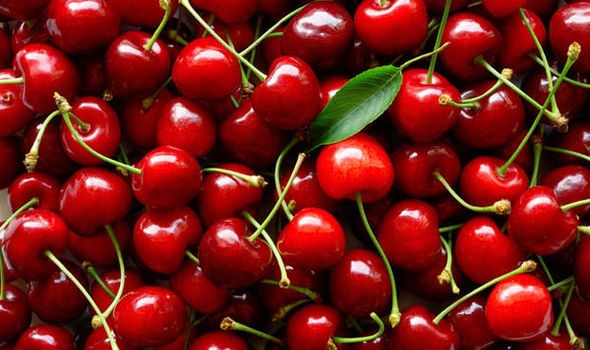Sweet cherry varieties:
Early Reverse: It is an early variety which matures in start-May. Fruits are big, black, egg shaped, and has small kernel. The fruit has pink flesh which is aromatic. The variety is resistant to cracking.
Early purple black heart: It has big size fruits, round heart shaped, and is long. The peel of fruit is thick, red to brinjal black in color. The variety matures in end-May.
Emperor Francis: The variety is resistant to cracking. Fruits are deep red in color.
Royal N: The variety has big sized fruits, egg shaped, and is comparatively hard. The flesh is sweet and juicy. The fruits matures late and matures in end-June.
Compost Lambert: The trees of this variety is dwarf. Fruits are of good shape and black in color.
Stella: It is an early and productive variety. It has black color fruits, big to medium, heart-egg in shape. Flesh is hard and productive.
Van: It is an early and productive variety. It has big sized fruits, shining black, hard and is short in diameter. It is resistant to cracking and gives good quality fruits.
Viscount: Fruits are medium to big size, flesh shaped, shining, deep red color, hard, and are attractive. The juice is deep red in color.
Hedelfinger: The variety matures earlier than Lambert. It has big sized fruits, hard and is of good quality. The variety is resistant to cracking.
Sour cherry varieties:
English morello: This variety has small trees, straight growing, spreading and is productive. It is a late variety which has dark color and is good in taste. Fruits are black taking dark red color, semi-hard, medium size and is suitable for making pie.
Montmorency: The variety is resistant and productive.
Meteor: The tree is dense and is more productive. Fruits are medium in size and is round-egg shaped. Fruits are bright and light red in color.
Other state varieties:
Early Purple Black Heart, Guigne Noir Gross Lucenta, Guigne Noir Hative
Black Tartarian, Napoleon White, Sam, Sue, Stella, Van, Black Republican, Pink Early, White Heart, Early Rivers, Nirodiro, Cherry Red Sweet heart









